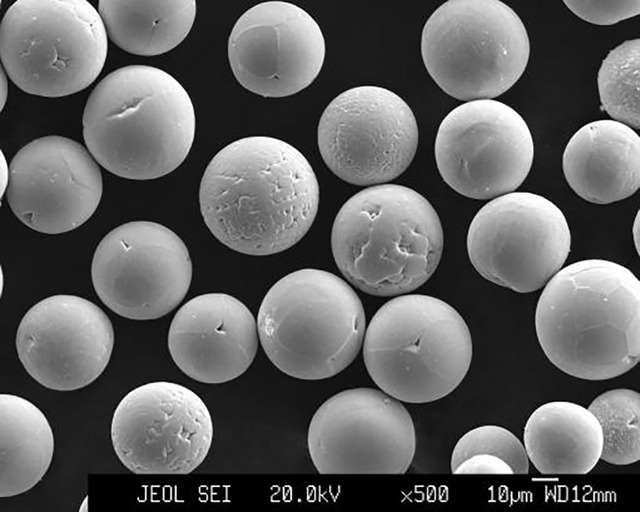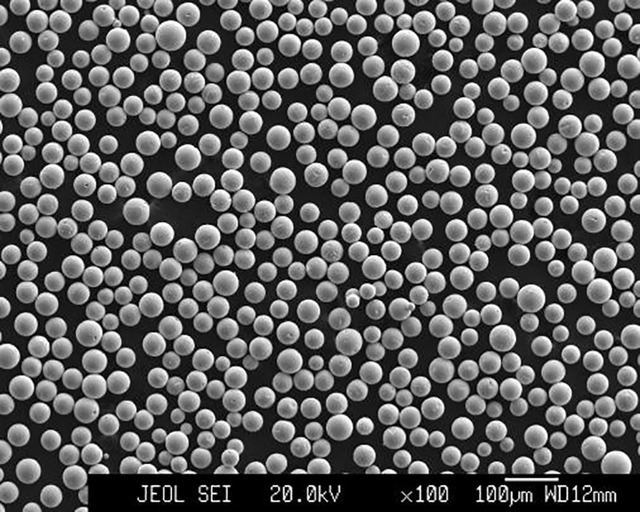Production Methods of Spherical Molybdenum Powder
Spherical molybdenum powder is produced through various methods, each offering unique advantages and disadvantages. The most common methods include:


1. Gas Atomization
- Process: Molten molybdenum is atomized by a high-velocity gas stream, resulting in spherical particles.
- Advantages: Produces highly spherical particles with a narrow size distribution.
- Disadvantages: High energy consumption and potential for gas contamination.
2. Plasma Spraying
- Process: Molten molybdenum is sprayed into a plasma stream, forming spherical droplets that solidify upon cooling.
- Advantages: Can produce particles with a wide range of sizes and can be used to create composite powders.
- Disadvantages: High energy consumption and potential for particle agglomeration.
3. Electrolytic Deposition
- Process: Molybdenum is deposited onto a cathode from a solution, forming a layer that is then scraped off and processed to obtain spherical particles.
- Advantages: Low energy consumption and can produce high-purity powder.
- Disadvantages: Slow production rate and potential for impurities in the powder.
4. Rotating Electrode Process (REP)
- Process: A rotating molybdenum electrode is submerged in a molten salt bath, and a current is passed through it to produce spherical particles.
- Advantages: Can produce a high-quality spherical powder with a narrow size distribution.
- Disadvantages: Complex equipment and high operating costs.
5. Other Methods
- Water Atomization: Similar to gas atomization, but uses water as the atomizing fluid.
- Spheroidization: Irregularly shaped molybdenum powder is heated and cooled to round the edges.
- Ultrasonic Atomization: Uses high-frequency sound waves to atomize molten molybdenum.
Comparison of Spherical Molybdenum Powder Production Methods
| Method | Advantages | Disadvantages |
|---|---|---|
| Gas Atomization | High sphericity, narrow size distribution | High energy consumption, gas contamination |
| Plasma Spraying | Wide size range, composite powder production | High energy consumption, particle agglomeration |
| Electrolytic Deposition | Low energy consumption, high purity | Slow production rate, impurities |
| Rotating Electrode Process | High-quality powder, narrow size distribution | Complex equipment, high operating costs |
| Water Atomization | Similar to gas atomization | Potential for contamination |
| Spheroidization | Simple process | Limited control over particle size |
| Ultrasonic Atomization | Fine particle size | Complex equipment, high operating costs |
The choice of production method depends on factors such as desired particle size, purity, and cost. Recent advancements in technology have led to improvements in these methods, making it possible to produce spherical molybdenum powder with even higher quality and efficiency.
Advantages of Spherical Molybdenum Powder
Spherical molybdenum powder offers several advantages over irregularly shaped powder, making it a preferred choice in many applications. These advantages include:
1. Improved Flowability and Compaction
- Enhanced packing density: Spherical particles pack more efficiently, leading to higher density and improved compaction properties.
- Reduced segregation: The uniform shape of spherical particles minimizes segregation during handling and processing, ensuring consistent material distribution.
- Better powder flow: Spherical powder exhibits improved flow characteristics, facilitating easier handling and processing.
2. Enhanced Sintering Characteristics
- Uniform microstructure: Spherical particles sinter more uniformly, resulting in a more homogeneous microstructure and improved mechanical properties.
- Reduced porosity: The close packing of spherical particles leads to lower porosity, which enhances strength and durability.
- Faster sintering: Spherical powder often requires lower sintering temperatures and shorter sintering times compared to irregularly shaped powder.
3. Lower Porosity and Higher Density
- Improved mechanical properties: Lower porosity and higher density result in increased strength, hardness, and toughness.
- Enhanced wear resistance: The denser microstructure of spherical powder provides better resistance to wear and abrasion.
- Improved electrical and thermal conductivity: The reduced porosity and increased density contribute to improved electrical and thermal conductivity.
4. Better Mechanical Properties
- Increased strength and hardness: Spherical powder often exhibits higher tensile strength, yield strength, and hardness compared to irregularly shaped powder.
- Improved ductility: The uniform microstructure of spherical powder can lead to enhanced ductility and toughness.
- Better fatigue resistance: Spherical powder may exhibit improved resistance to fatigue failure, making it suitable for applications subjected to cyclic loading.
5. Reduced Wear and Corrosion
- Enhanced wear resistance: The dense microstructure of spherical powder provides better resistance to wear and abrasion, extending the service life of components.
- Improved corrosion resistance: The reduced porosity and uniform microstructure of spherical powder can enhance corrosion resistance, making it suitable for applications in corrosive environments.
Comparison of Spherical Molybdenum Powder Advantages
| Advantage | Explanation |
|---|---|
| Improved flowability and compaction | Higher packing density, reduced segregation, better powder flow |
| Enhanced sintering characteristics | Uniform microstructure, reduced porosity, faster sintering |
| Lower porosity and higher density | Improved mechanical properties, enhanced wear resistance, improved electrical and thermal conductivity |
| Better mechanical properties | Increased strength and hardness, improved ductility, better fatigue resistance |
| Reduced wear and corrosion | Enhanced wear resistance, improved corrosion resistance |
In conclusion, spherical molybdenum powder offers a range of advantages that make it a valuable material in various industries. Its improved flowability, sintering characteristics, mechanical properties, and wear and corrosion resistance make it a preferred choice for applications requiring high-performance materials.
Applications of Spherical Molybdenum Powder
Spherical molybdenum powder is used in a wide range of industries due to its unique properties and versatility. Some of the key applications include:
1. Aerospace and Defense
- Rocket nozzles: Spherical molybdenum powder is used to fabricate rocket nozzles that can withstand extreme temperatures and pressures.
- Aircraft components: Spherical molybdenum powder is used to manufacture aircraft components such as turbine blades, vanes, and heat shields.
- Missile components: Spherical molybdenum powder is used in the production of missile components that require high strength, heat resistance, and corrosion resistance.
2. Automotive Industry
- Exhaust valves: Spherical molybdenum powder is used to fabricate exhaust valves that can withstand high temperatures and corrosive environments.
- Turbocharger components: Spherical molybdenum powder is used in the production of turbocharger components such as turbine wheels and compressor wheels.
- Brake pads: Spherical molybdenum powder is used as a filler material in brake pads to improve wear resistance and braking performance.
3. Electronics and Semiconductors
- Electrical contacts: Spherical molybdenum powder is used to manufacture electrical contacts that require high conductivity and wear resistance.
- Semiconductor substrates: Spherical molybdenum powder is used as a substrate material in semiconductor devices.
- Electronic packaging: Spherical molybdenum powder is used in electronic packaging applications to provide thermal and mechanical support.
4. Chemical and Petrochemical
- Catalyst supports: Spherical molybdenum powder is used as a support material for catalysts in various chemical and petrochemical processes.
- Heat exchangers: Spherical molybdenum powder is used to fabricate heat exchangers that can withstand high temperatures and corrosive environments.
- Piping and fittings: Spherical molybdenum powder is used in the production of piping and fittings for chemical and petrochemical plants.
5. Other Industries
- Medical devices: Spherical molybdenum powder is used in the production of medical devices such as implants and prosthetics.
- Metallurgical applications: Spherical molybdenum powder is used as an alloying element in various metals and alloys.
- Energy storage: Spherical molybdenum powder is being investigated for use in energy storage applications such as batteries and supercapacitors.
Applications of Spherical Molybdenum Powder
| Industry | Applications |
|---|---|
| Aerospace and Defense | Rocket nozzles, aircraft components, missile components |
| Automotive Industry | Exhaust valves, turbocharger components, brake pads |
| Electronics and Semiconductors | Electrical contacts, semiconductor substrates, electronic packaging |
| Chemical and Petrochemical | Catalyst supports, heat exchangers, piping and fittings |
| Other Industries | Medical devices, metallurgical applications, energy storage |
The versatility of spherical molybdenum powder makes it a valuable material in a wide range of industries. Its unique properties, such as high strength, heat resistance, and corrosion resistance, make it well-suited for demanding applications. As technology continues to advance, new and innovative applications for spherical molybdenum powder are likely to emerge.
Challenges and Future Trends in Spherical Molybdenum Powder Production
Despite its numerous advantages, the production of spherical molybdenum powder faces several challenges. Addressing these challenges and exploring future trends will be crucial for ensuring the continued growth and development of this important material.
1. Cost-Effective Production Methods
- Energy consumption: The production of spherical molybdenum powder often requires significant energy input, which can increase costs.
- Equipment costs: The specialized equipment used in the production process can be expensive to purchase and maintain.
- Raw material costs: The cost of molybdenum ore and other raw materials can fluctuate, impacting the overall production cost.
2. Consistency and Quality Control
- Particle size distribution: Maintaining a consistent particle size distribution is essential for many applications.
- Purity: Ensuring the high purity of the powder is critical for its performance in certain industries.
- Surface finish: The surface finish of the particles can affect their properties and behavior.
3. Emerging Applications and Market Demands
- New industries: As new industries and technologies emerge, there will be increasing demand for spherical molybdenum powder with specific properties.
- Customization: Meeting the unique requirements of different applications may necessitate customization of the production process.
- Competitive landscape: The competitive landscape for spherical molybdenum powder is evolving, requiring continuous innovation and improvement.
4. Research and Development Efforts
- New production methods: Research and development efforts are focused on developing more efficient and cost-effective production methods.
- Improved properties: Scientists are exploring ways to enhance the properties of spherical molybdenum powder, such as strength, heat resistance, and corrosion resistance.
- Novel applications: Researchers are investigating new and emerging applications for spherical molybdenum powder, such as in energy storage and medical devices.
Challenges and Future Trends in Spherical Molybdenum Powder Production
| Challenge | Future Trend |
|---|---|
| Cost-effective production methods | Energy-efficient processes, advanced equipment, cost-effective raw materials |
| Consistency and quality control | Improved process control, advanced characterization techniques, quality assurance systems |
| Emerging applications and market demands | Customization, innovation, competitive differentiation |
| Research and development efforts | New production methods, improved properties, novel applications |
Addressing these challenges and capitalizing on future trends will be essential for ensuring the continued growth and development of the spherical molybdenum powder industry. By investing in research and development, adopting innovative technologies, and focusing on quality and consistency, manufacturers can meet the evolving needs of their customers and maintain a competitive edge in the market.


